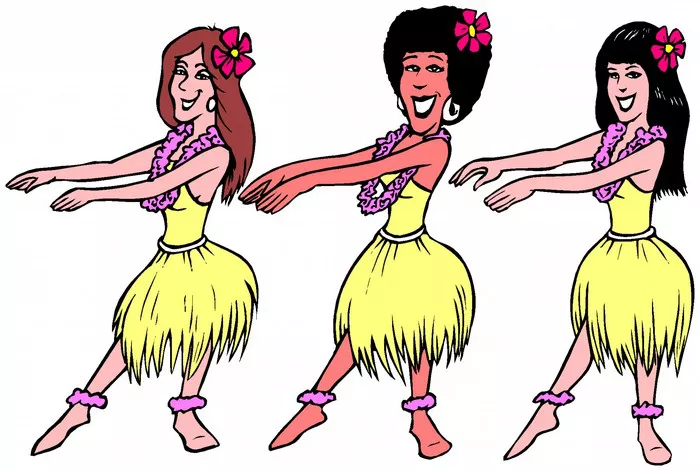April 1st, known worldwide as April Fools’ Day, is a day dedicated to pranks, practical jokes, and playful deception. It’s a time when individuals and organizations alike seize the opportunity to showcase their wit and creativity through humorous antics. In this article, we’ll delve into the history and significance of April Fools’ Day, explore the psychology behind why we love to pull pranks, and of course, share some side-splitting examples of April 1st jokes to brighten your day.
The Origins of April Fools’ Day
The origins of April Fools’ Day are shrouded in mystery, with various theories and legends tracing its roots back centuries. One popular belief is that the tradition dates back to the 16th century when France transitioned from the Julian calendar to the Gregorian calendar, as decreed by the Council of Trent in 1563. Under the Julian calendar, the New Year was celebrated around the end of March or early April. However, those who failed to recognize the change and continued to celebrate the New Year in April were labeled as “April fools” and became the subjects of ridicule and practical jokes.
Another theory suggests that April Fools’ Day has ancient pagan roots, with celebrations linked to the vernal equinox and the arrival of spring. During these festivities, people engaged in revelry and mischief, including the playing of pranks on one another.
Regardless of its exact origins, April Fools’ Day has evolved into a global phenomenon celebrated with enthusiasm and gusto across cultures and continents.
The Psychology of Pranks
What compels us to engage in pranks and practical jokes on April Fools’ Day? The psychology behind our love of mischief can be attributed to several factors:
Social Bonding: Pranks provide an opportunity for social bonding and camaraderie. Whether it’s pulling a prank on a friend, colleague, or family member, the shared experience creates a sense of connection and shared laughter.
Escapism: In a world often filled with stress and uncertainty, April Fools’ Day offers a brief escape from reality. Engaging in lighthearted pranks allows us to momentarily let go of our worries and embrace the joy of silliness.
Creativity and Innovation: Pulling off a successful prank requires creativity, ingenuity, and quick thinking. The challenge of coming up with a clever prank and executing it flawlessly can be immensely satisfying and rewarding.
Surprise and Delight: There’s something inherently delightful about catching someone off guard with a well-executed prank. The element of surprise adds an extra layer of enjoyment to the experience, both for the prankster and the unsuspecting victim.
The Art of the April 1st Joke
Now, let’s explore some examples of April 1st jokes that showcase the ingenuity and humor of this time-honored tradition:
Example 1: The Fake Announcement
Send out a fake company-wide email announcing a bizarre new policy or initiative. For example:
Subject: Important Announcement: Introducing Casual Mondays!
Dear Team,
We’re excited to announce a new initiative aimed at promoting a more relaxed and laid-back atmosphere in the workplace. Starting next Monday, we will be implementing Casual Mondays, where employees are encouraged to come to work in their pajamas or favorite loungewear. We believe that this change will foster creativity, comfort, and camaraderie among team members.
Please note that while pajamas are encouraged, slippers and bathrobes are strictly optional. We look forward to seeing everyone’s unique sense of style on display!
Best regards,
[Your Name]
Example 2: The Office Prank
Cover a colleague’s desk with sticky notes, covering every inch of available space. You can also get creative by arranging the sticky notes to create a pixelated image or a funny message.
Example 3: The Tech Trickery
Change the autocorrect settings on a friend’s phone or computer to replace common words with silly or nonsensical alternatives. Imagine their confusion when every time they type “hello,” it gets changed to “banana” or “unicorn.”
These examples illustrate the wide range of possibilities when it comes to April 1st jokes. From subtle pranks to elaborate hoaxes, the key is to strike the perfect balance between humor and harmless fun.
Navigating April Fools’ Day in the Workplace
While April Fools’ Day is a time for laughter and lightheartedness, it’s important to approach pranks with sensitivity and respect, especially in a professional setting. Here are a few tips for navigating April Fools’ Day in the workplace:
Know Your Audience: Consider the preferences and sensibilities of your colleagues before pulling a prank. Avoid anything that could be perceived as mean-spirited or offensive.
Keep It Light: Stick to harmless pranks that won’t cause undue stress or disruption. The goal is to bring joy and laughter, not frustration or anxiety.
Respect Boundaries: Be mindful of personal boundaries and avoid pranks that could potentially embarrass or upset others. If in doubt, err on the side of caution.
Maintain Professionalism: While April Fools’ Day is a time for fun, it’s important to maintain professionalism in the workplace. Avoid pranks that could impact productivity or create unnecessary distractions.
By approaching April Fools’ Day with thoughtfulness and consideration, you can ensure that everyone enjoys the festivities in a positive and inclusive manner.
Conclusion
April Fools’ Day is a time-honored tradition that celebrates the joy of laughter, creativity, and camaraderie. From elaborate hoaxes to simple pranks, the art of the April 1st joke has captivated people around the world for centuries. By understanding the psychology behind our love of pranks and approaching April Fools’ Day with sensitivity and respect, we can create memorable moments of laughter and levity that bring us closer together. So, this April 1st, embrace the spirit of mischief and mayhem, and don’t be afraid to let your inner prankster shine!


